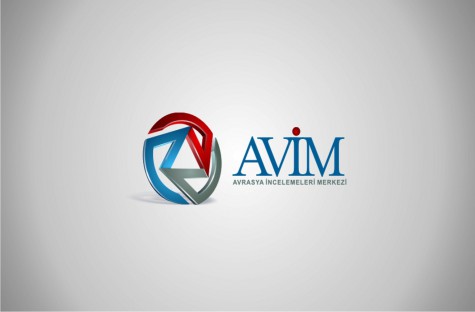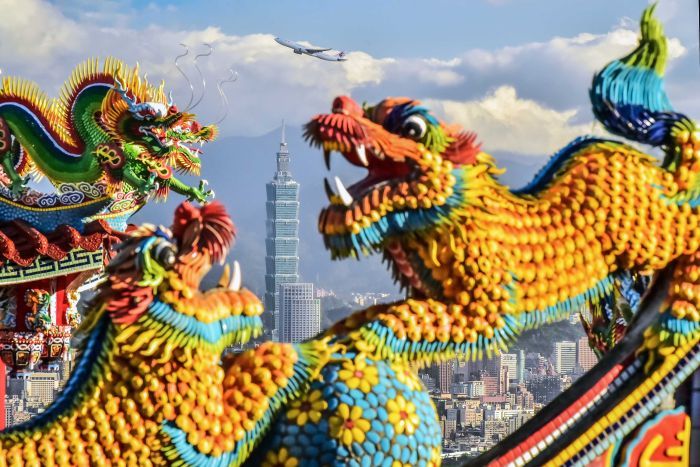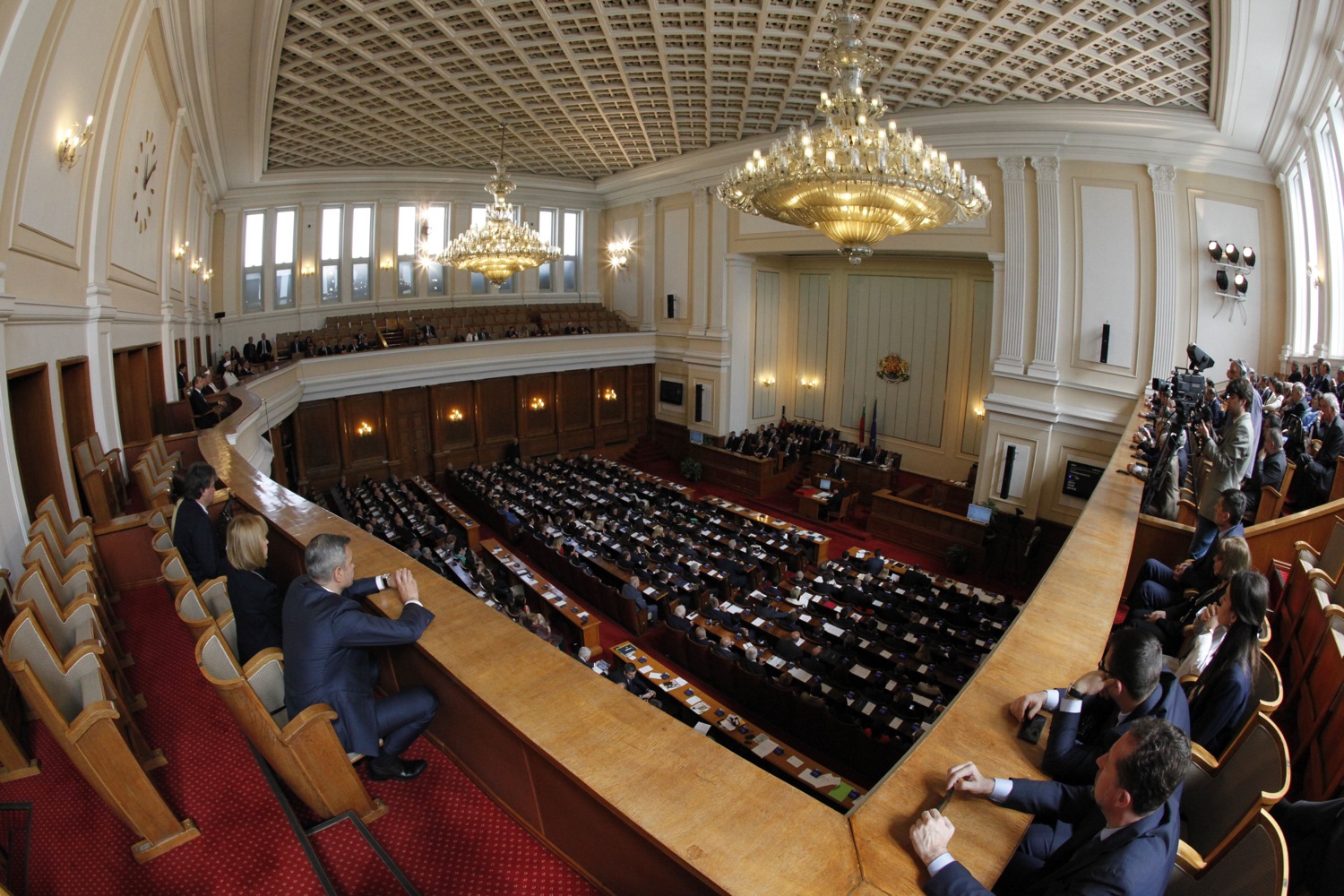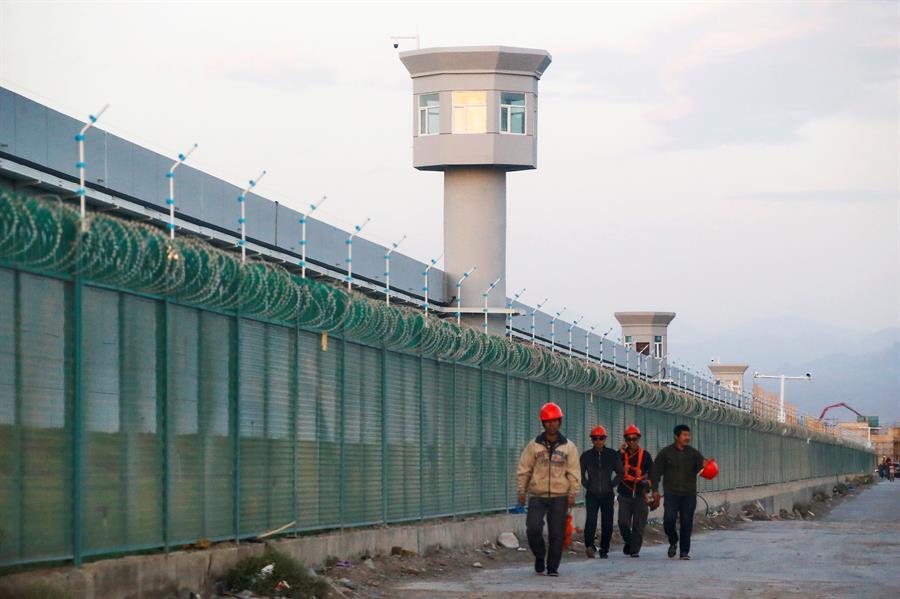
Garegin Nejdeh (also transliterated as Nzhdeh or Njdeh), born in 1886 and deceased in 1955, was a leader of the Armenian Revolutionary Federation (ARF), a party established in 1890. He led an Armenian volunteers unit for Bulgaria during the Balkan wars of 1912-1913—namely when the Bulgarian forces, including the foreign volunteers, practiced ethnic cleansing against the Turks, Pomaks and Greeks[1]—then another volunteers unit for the Russian army during the First World War. The Armenian volunteers, according the Russian sources themselves (including martial court verdicts) committed a long series of massacres, rapes and plunder, as early as November 1914.[2] From 1918 to 1921, Nejdeh was an officer of the Republic of Armenia and, at the end, of the de facto Republic maintained in the eastern part of this country by the ARF until the final victory of the Soviets in 1921. One more time, Nejdeh was one of the officers who commanded forces practicing ethnic cleansing.[3]
In 1933, at the request of the ARF, Nejdeh established the party’s youth organization in North America. The name, until 1943, was Tzgeghagron, which literally means in Armenian: “The religion of race.” It can be translated into “The Union of the Race’s worshippers.” Then, it became the Armenian Youth Federation (AYF), which still exists in 2019 (in the U.S., Canada and Australia). The Tzghagron’s doctrine was (and remains) based on Aryanist racism. In Hairenik (Boston) dated 27 September 1933, Nejdeh explained:
“The Racial-Religious believes in his racial blood as a deity. Race above everything and before everything. Race comes first. Everything for the race.... We hear the Racial Religious Orders have their own general creed, their leadership and political emblem. They are also going to have their own uniforms, their own hymn, their rites, their holidays.”
The Hairenik Weekly (today The Armenian Weekly) dated 21 January 1935 quoted the Tzeghagron as follows:
“I am preaching to you the Tzeghagron Creed, worship of the race […] To me the highest act of individualism and of freedom is to follow the voice of my race. I am a Tzeghagron. That means: I know my race. I believe in my race. I worship my race. I know that ray race is great; that my race has given more to humanity than it has received from it. I am a believer in my race and, behold, I worship another deity, the blood of my race, in whose unspotted purity lies the future of our people. […] The Deification of the will of the Race—that is what the Tzeghagron is fighting for.”
In case the Nazi orientation was not clear for everybody, Nejdeh explained (Hairenik Weekly, 10 April 1936): “Today Germany and Italy are strong, because as a nation they live and breathe in the terms of race.”[4] So, there is no ambiguity about the meaning of “race” for Nejdeh and his followers: It is the same then for Hitler. This was not something really new for the ARF, converted to Aryanist racism well before 1933 and even before the First World War.[5]
Back to Europe at the beginning of WWII, Nejdeh was a member—together with two other leaders of the ARF, Ardaches Apeghian and Vahan Papazian—of the National Armenian Council established in 1942 under the auspices of Alfred Rosenberg, the Third Reich’s minister for the occupied eastern territories. One of the main aims of the council was to recruit volunteers for the Wehrmacht and the Waffen-SS.[6] Arrested by the Soviets in 1944, Nejdeh was sentenced to 25 years of hard labor and died in a gulag in 1955.
Certainly, Nejdeh was not the only Nazi collaborator; but he was one of the most involved in building a Nazi doctrine for non-Germans and, more important, he is the only one (with Drastamat “Dro” Kanayan, main leader of the ARF from 1923 to 1956 and officer of the Wehrmacht) to be celebrated today as a national hero by state institutions. As early as 1991, the “moderate” President Levon Ter-Petrossian gave his name to the second biggest square of Yerevan and to the metro station located below. The Republican Party of Armenia, in power from 1998 to 2018, claimed Nejdeh as his unique ideological reference. During his first months in power, Nikol Pashinyan did not discuss the subject that much. However, in October 2019, he was forced to react when Azerbaijani President Ilham Aliyev stated to him that Armenia is glorifying Nazi collaborators such as Nejdeh. Mr. Pashinyan’s reaction was the contrary of a self-criticism:
“Yet the truth is that Karekin Njdeh fought against Turkish occupation of Armenia, against the genocide of Armenians and […] also commanded, together with many Russian officers, a very important section of the frontline during the Armenian-Turkish war in 1918.
[…] Njdeh died in the Vladimir prison. Many prominent Soviet figures died in the Vladimir prison and [writer Aleksandr] Solzhenitsyn was in the Gulag. Do we consider everyone imprisoned from 1937 through the 1950s political prisoners?”[7]
As Mr. Pashinyan merely was a journalist two years ago, and became the Prime Minister mainly thanks to the unpopularity of the Republican Party of Armenia, he could have dismissed the acts of the previous cabinets easily. It would have been even more logical as Nejdeh’s interpretation of Nazism was made the state ideology of the period 1998-2018, the books of this Nazi collaborator being reprinted at the expense of the state, to “educate” the new generations. It provoked a series of reactions, including by the author of these lines. Indeed, in 2014, I co-authored an op-ed in the Israeli daily Haaretz,[8] which was summarized in French on the website of the Parisian weekly Courrier international and which displeased the Armenian government of the time a lot. In 2016, The Jerusalem Post echoed the protests against the erection of the second statue of Nejdeh in Yerevan[9] and in 2017 it was the Russian government himself who protested, in vain.[10]
As a result, if Mr. Pashinyan, a professional of communication, fully aware of the bad advertisement his statement can cause to him and the country he rules, affirms that the statues of Nejdeh will remain in Yerevan and that there is nothing wrong in that, it is because he thinks Nejdeh’s ideas are fine.[*]
[1] Comité de la défense nationale, Les Atrocités des Bulgares en Thrace, İstanbul, 1913, http://louisville.edu/a-s/history/turks/atrocites_bulgares_en_thrace.pdf ; Neriman Ersoy-Hacısalihoğlu, “Bulgaria’s Policy toward Muslims during the Balkan Wars,” and Tetsuya Sahara, “Paramilitaries in the Balkan Wars: The Case of Macedonian
Adrianople Volunteers,” in Hakan Yavuz and Isa Blumi (ed.), The Balkan Wars, 1912-1913 and their Sociopolitical Implications, Salt Lake City: University of Utah Press, 2013, pp. 361-370 and 399-419; Theodoros Zaimes, The Crimes of Bulgaria in Macedonia, Washington, 1914, https://archive.org/details/crimesbulgariai00panegoog
[2] Mehmet Perinçek (ed.), 11 Aralık 1915 Tarihli Resmi Ermeni Raporu, İstanbul : Doğan Kitap, 2009; Michael A. Reynolds, Shattering Empires. The Clash and Collapse of the Ottoman and Russian Empires, 1908-1918, Cambridge-New York: Cambridge University Press, 2011, pp. 156-158.
[3] M. de Martel, haut-commissaire français au Caucase, à M. Millerand, président du Conseil, ministre des Affaires étrangères, 20 juillet 1920, Archives du ministère des Affaires étrangères, La Courneuve, microfilm P 16674 ; Anahide Ter-Minassian, La République d'Arménie : 1918-1920, Bruxelles : Complexe, 2006, pp. 216-217.
[4] These three quotations are in [Arthur Derounian], “John T. Flynn and the Dashnags,” The Propaganda Battlefront, 31 May 1944, http://jfk.hood.edu/Collection/Weisberg%20Subject%20Index%20Files/F%20Disk/Friends%20Of%20Democracy/Item%2006.pdf
[5] Frédéric Macler, Autour de l’Arménie, Paris : E. Nourry, 1917, pp. 181-192, https://gallica.bnf.fr/ark:/12148/bpt6k5808755s.texteImage (summarizing a book published in Armenian by the ARF’s ideologue, Mikael Varandian, in 1912) ; editorial of Haiastan, organ of the ARF in Bulgaria, 19 August 1914, translated in Aspirations et agissements révolutionnaires des comités arméniens, avant et après la proclamation de la Constitution ottomane, İstanbul : Matbaai Orhaniye, 1917, p. 155, http://louisville.edu/a-s/history/turks/comites_armeniens.pdf; Mikaël Varandian, L’Arménie et la question arménienne, Laval: Imprimerie G. Kavanagh & Cie, 1917, 14-15 and 23-24, http://gallica.bnf.fr/ark:/12148/bpt6k58099388.r=; Mikaël Varandian, Le Conflit arméno-géorgien et la guerre du Caucase, Paris : Flinikowski, 1919, pp. 32, 69, and 100-101, https://gallica.bnf.fr/ark:/12148/bpt6k5607240t/
[6] Mehmet Perinçek, “Nazi-Dashnak Collaboration during World War II,” in AVIM (ed.), Turkish-Russian Academics. A Historical Study on the Caucasus, Ankara: Terazi, 2016, pp. 199-231 ; Yves Ternon, La Cause arménienne, Paris : Le Seuil, 1983, p. 132.
[7] “Pashinyan, Aliyev Spar Over Karekin Njdeh,” Asbarez.com, 11 October 2019, http://asbarez.com/186919/pashinyan-aliyev-spar-over-karekin-njdeh/
[8] Maxime Gauin and Alexander Murinson, “Baku to the Future,” Haaretz, 29 October 2014, https://www.haaretz.com/opinion/.premium-azeris-are-israel-s-true-allies-1.5321608
[9] Jeremy Sharon, “Armenian Monument to Nazi Collaborator Draws Criticism,” The Jerusalem Post, 17 June 2016, https://www.jpost.com/Diaspora/Armenian-monument-to-Nazi-collaborator-draws-criticism-457072
[10] “Armenian Ruling Party Rebuffs Russian Accusation It 'Glorifies Nazism,'” Rferl.org, 22 November 2017, https://www.rferl.org/a/armenan-ruling-party-hhk-rebuffs-russian-accusation-it-glorifies-nazism/28868928.html
[*] For additonal reading on the state and public support given to extremism in Armenia, please see: Mehmet Oğuzhan Tulun, "Armenia And The Veneration Of Terrorists – II," Center for Eurasian Studies (AVİM), Analysis No: 2019/21, September 16, 2019, https://avim.org.tr/en/Analiz/ARMENIA-AND-THE-VENERATION-OF-TERRORISTS-II
© 2009-2025 Center for Eurasian Studies (AVİM) All Rights Reserved
No comments yet.
-
 ARMENIA, THE 'BRANCH OF RUSSIA' IN THE SOUTH CAUCASUS
ARMENIA, THE 'BRANCH OF RUSSIA' IN THE SOUTH CAUCASUS
Maxime GAUIN 31.08.2015 -
 MR. NALBANDIAN DID NOT TELL THE TRUTH
MR. NALBANDIAN DID NOT TELL THE TRUTH
Maxime GAUIN 11.09.2014 -
 THE COLLAPSE OF DASHNAK ARMENIA IN 1920 AND THE DEBACLE OF NIKOL PASHINYAN’S REGIME IN 2020
THE COLLAPSE OF DASHNAK ARMENIA IN 1920 AND THE DEBACLE OF NIKOL PASHINYAN’S REGIME IN 2020
Maxime GAUIN 30.10.2020 -
 PATRICK DEVEDJIAN: A NEO-FASCIST WHO WAS A LIFE-LONG SUPPORTER OF TERRORISM
PATRICK DEVEDJIAN: A NEO-FASCIST WHO WAS A LIFE-LONG SUPPORTER OF TERRORISM
Maxime GAUIN 02.04.2020 -
 THE “NEJDEHISM” REMAINS OFFICIAL IN ARMENIA
THE “NEJDEHISM” REMAINS OFFICIAL IN ARMENIA
Maxime GAUIN 30.10.2019
-
 BOOK REVIEW: “ARMENIA’S FUTURE, RELATIONS WITH TURKEY, AND THE KARABAGH CONFLICT”
BOOK REVIEW: “ARMENIA’S FUTURE, RELATIONS WITH TURKEY, AND THE KARABAGH CONFLICT”
Gülperi GÜNGÖR 11.02.2020 -
 TAIWAN ELECTION 2020: MORE AMBITIOUS TAIWANESE IDENTITY AND DEVELOPING CONSTRUCTIVE APPROACHES
TAIWAN ELECTION 2020: MORE AMBITIOUS TAIWANESE IDENTITY AND DEVELOPING CONSTRUCTIVE APPROACHES
Teoman Ertuğrul TULUN 10.02.2020 -
 THE NECESSITY FOR A GOVERNMENT THAT CAN PULL BULGARIA OUT OF CRISIS
THE NECESSITY FOR A GOVERNMENT THAT CAN PULL BULGARIA OUT OF CRISIS
Gözde KILIÇ YAŞIN 29.05.2023 -
 THE EU’S WORRIES ON THE US’ MILITARY EXISTENCE/ABSENCE
THE EU’S WORRIES ON THE US’ MILITARY EXISTENCE/ABSENCE
Hazel ÇAĞAN ELBİR 11.01.2021 -
 UYGHUR TURKS AND THE SANCTIONS IMPOSED ON CHINA
UYGHUR TURKS AND THE SANCTIONS IMPOSED ON CHINA
Özge OĞUZ 07.05.2021
-
25.01.2016
THE ARMENIAN QUESTION - BASIC KNOWLEDGE AND DOCUMENTATION -
12.06.2024
THE TRUTH WILL OUT -
27.03.2023
RADİKAL ERMENİ UNSURLARCA GERÇEKLEŞTİRİLEN MEZALİMLER VE VANDALİZM -
17.03.2023
PATRIOTISM PERVERTED -
23.02.2023
MEN ARE LIKE THAT -
03.02.2023
BAKÜ-TİFLİS-CEYHAN BORU HATTININ YAŞANAN TARİHİ -
16.12.2022
INTERNATIONAL SCHOLARS ON THE EVENTS OF 1915 -
07.12.2022
FAKE PHOTOS AND THE ARMENIAN PROPAGANDA -
07.12.2022
ERMENİ PROPAGANDASI VE SAHTE RESİMLER -
01.01.2022
A Letter From Japan - Strategically Mum: The Silence of the Armenians -
01.01.2022
Japonya'dan Bir Mektup - Stratejik Suskunluk: Ermenilerin Sessizliği -
03.06.2020
Anastas Mikoyan: Confessions of an Armenian Bolshevik -
08.04.2020
Sovyet Sonrası Ukrayna’da Devlet, Toplum ve Siyaset - Değişen Dinamikler, Dönüşen Kimlikler -
12.06.2018
Ermeni Sorunuyla İlgili İngiliz Belgeleri (1912-1923) - British Documents on Armenian Question (1912-1923) -
02.12.2016
Turkish-Russian Academics: A Historical Study on the Caucasus -
01.07.2016
Gürcistan'daki Müslüman Topluluklar: Azınlık Hakları, Kimlik, Siyaset -
10.03.2016
Armenian Diaspora: Diaspora, State and the Imagination of the Republic of Armenia -
24.01.2016
ERMENİ SORUNU - TEMEL BİLGİ VE BELGELER (2. BASKI)
-
AVİM Conference Hall 24.01.2023
CONFERENCE TITLED “HUNGARY’S PERSPECTIVES ON THE TURKIC WORLD"









